










































































































Specifically selected by renowned turfgrass researchers for drought and wear tolerance from 27,700 other genotypes. Strenuously tested for two decades under extreme stresses in both research and real world production environments.
A scientific breakthrough in performance and sustainability, TIFTUF ® Certified Bermudagrass uses 38% less water
than Tifway and is more drought tolerant than Celebration ™ , Latitude 36 ™ and all other tested bermudagrasses. Fine textured and dense, TIFTUF ® powers through cold, shrugs off traffic, spreads with incredible speed, greens up early and retains its color well into fall. Science has just delivered it all — TIFTUF ® .

Thank you to the members, sponsors, and supporters of the Virginia Turfgrass Council (VTC). Because of your generosity the VTC has had the opportunity to visit with State and Federal legislators. Meetings with Congressman Bobby Scott and Senator Mark Warner emphasized our industry’s concerns relating to pesticides and their possible restrictions. Your support has allowed the VTC to have in depth discussions with the Secretary of Agriculture and Forestry Matthew Lohr and Com missioner Joseph Guthrie of VDACS. These meetings were arranged to emphasize our industry’s frustration with turnaround time relating to pesticide examinations.
Your donations to the Virginia Turfgrass Environmental Institute (VTC-EI) have allowed our industry to create partnerships with diverse organizations to emphasize the need for well-trained turf and landscape professionals in the com munity. VTC-EI has partnered with organizations in service project that have bridged landscape concerns with environmental enhancement. Your support has allowed the VTC-EI to be a partner with the Chesapeake Bay Foundation and the Elizabeth River Project to incorporate sound turf and landscape practice with shoreline restoration projects. VTC-EI volunteers have assisted local communities and universities with soil loss and landscaping projects. These partnerships have created opportunities to expand member services by developing pollinator gar dens, rain gardens, oyster reefs and shoreline restoration.
With great support from dedicated sponsors the VTC will now provide an ad ditional member benefit of pesticide and fertilizer recertification on demand at its website. Your membership has always included recertification at scheduled events but now you’ll have the advantage of refreshing your certification at your leisure and on your time.
I would like to conclude by thanking all those that have donated to the VTC-EI. I am extremely grateful for the support our sponsors have already provided. Their generosity has already made a substantial impact. Additional support is continu ally needed to confront continuing concerns to our industry. Without continual funding the VTC may lose its status as one of the largest turf and landscaping representatives in the state of Virginia. Without increased funding we could lose our ability to discuss concerns with decision makers. Please consider upping your membership and contribution to the VTC-EI. The VTC is an insurance policy that you are educated on policy changes, that your concerns are heard by decision mak ers, and that your profession is represented as vital to the community.
Phil Bailey VTC PresidentEXECUTIVE DIRECTOR / DIRECTOR OF PROGRAMS
Tom Tracy, Ph.D. (757) 464-1004
VIRGINIA TURFGRASS FOUNDATION Brandyn Baty (757) 585-3058




At the last minute, I substituted this very important letter from Larry Nichols of VDACS for my column. The issue he discusses — auditing fertilizer applications and applicators — is critical. My column will reappear in the next issue.
Tom Tracy, Ph.D.

VTC Executive Director
By Larry M. Nichols
• Director, Division of Consumer Protection
Virginia Department of Agriculture & Consumer Services
TheVirginia Department of Agriculture and Consumer Services (VDACS) will be conducting audits of companies that apply lawn fertilizers. The audits will verify the acreage of lawn fertilizer applications made in accordance with Virginia’s Regulations for the Application of Fertilizer to Nonagricultural Lands, which then allows Virginia to receive credit from EPA for those acres of man aged lawns that meet requirements of Virginia’s Chesapeake Bay Watershed Imple mentation Plan. The Chesapeake Bay Watershed Implementation Plan is intended to reduce nutrient and sediment runoff into the Chesapeake Bay and its tidal tributaries. The audits will document that Virginia’s lawn care companies are not applying excess nutrients, thereby ensuring that Virginia is meeting goals of the Chesapeake Bay Wa tershed Implementation Plan.
Virginia’s Regulations for the Application of Fertilizer to Nonagricultural Lands include re quirements for lawn care companies related to the application rates established in the Virginia Department of Conservation and Recreation’s Virginia Nutrient Management Plan Standards and Criteria, certification of applicators, and recordkeeping. VDACS will randomly select lawn care companies across the Commonwealth for the audit. VDACS inspectors will be auditing application and training records to verify that: (i) the lawn care company’s employees are Certified Fertilizer Applicators or trained fertilizer applicators; (ii) lawn fertilizer applications are made in accordance with the Virginia Nutrient Management Standards and Criteria; (iii) lawn fertilizer application acreage, when required, has been reported to VDACS by the lawn care company; (iv) lawn fertilizer application records contain all information required by the Regulations for the Application of Fertilizer to Nonagricultural Lands; and (v) the company has a fertil izer contractor-applicator license as required by the Virginia Fertilizer Law. For more information please go to:
• Regulations for the Application of Fertilizer to Nonagricultural Lands
• Virginia Fertilizer Law (See Section 3.2-3602.1(B) and Section 3.2-3608)
• Virginia Nutrient Management Plan Standards and Criteria (See pages 96-107)
• Chesapeake Bay Watershed Implementation Plan
• DEQ Chesapeake Bay
Shawn D. Askew, Ph.D. Virginia Tech 435 Old Glade Road Blacksburg, VA 24061 540-231-5807 askew@vt.edu
Alejandro Del Pozo-Valdiva, Ph.D. Virginia Tech
Hampton Roads
Agricultural Research Station
1444 Diamond Springs Rd. Virginia Beach, VA 23455 757-363-3900 adelpozo@vt.edu
Jeffrey F. Derr, Ph.D. Virginia Tech
Hampton Roads
Agricultural Research Station
1444 Diamond Springs Rd. Virginia Beach, VA 23455 757-363-3912 jderr@vt.edu
Mike Goatley Jr., Ph.D. Virginia Tech 420 Smyth Hall Blacksburg, VA 24061 540-231-2951 goatley@vt.edu
David McCall, Ph.D. Virginia Tech 435 Old Glade Road Blacksburg, VA 24061 540-231-9598 dsmccall@vt.edu
Dan Sandor, Ph.D. Virginia Tech
170 Drillfield Dr. 411 Price Hall Blacksburg, VA 24061 540-231-9775 dsandor@vt.edu
WITH SUPPORT FROM:
Thomas P. Kuhar, Ph.D. Virginia Tech Dept. of Entomology 216 Price Hall 170 Drillfield Drive Blacksburg, VA 24061 540-231-6129 tkuhar@vt.edu
Agronomic Lawn Management 31 www.FertilizerWithALM.com
Burlingham Seeds .................................... 25 www.burlinghamseeds.com
Buy Sod, Inc. 9 www.buysod.com
Carolina Green Corp. 10 www.cgcfields.com
Collins Wharf Sod Farm 21 www.collinswharfsod.com
East Coast Sod & Seed 33 www.eastcoastsod.com
Greene County Fertilizer Co. 10 www.greenecountyfert.com
Harrell’s LLC Inside Front Cover www.harrells.com
Kesmac ..................................................... 27 www.brouwerkesmac.com
Landmark Turf & Native Seed 7 landmarkturfandnativeseed.com
Luck Ecosystems 32 www.luckecosystems.com
McGill Premium Compost 21 www.mcgillsoilbuilder.com
Mid-Atlantic STIHL 29 www.stihldealers.com
Mitchell Products 34 www.mitchellsand.com
Modern Turf, Inc. 21 www.modernturf.com
Premier Turf Farms .................................... 32 www.premierturffarms.com


Progressive Turf Equipment Inc. 35 www.progressiveturfequip.com
Rock Haven Turf Specialties 13 www.Facebook.com/RockHavenTurf
Smith Turf & Irrigation Back Cover www.smithturf.com
Sod Solutions 17 www.sodsolutions.com
STEC Equipment 3 www.stecequipment.com
The Turf Zone 31 www.theturfzone.com
The Turfgrass Group ................................... 5 www.theturfgrassgroup.com
Weed Man 33 www.weedmanfranchise.com
To discuss advertising opportunities, contact Leading Edge Communications: 888-707-7141
sales@leadingedgecommunications.com www.LeadingEdgeCommunications.com Journal of the Virginia Turfgrass Council

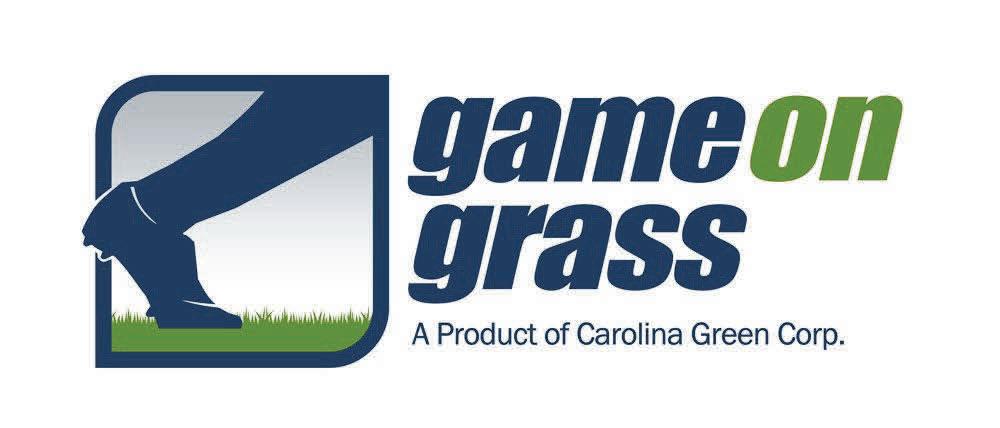









Tuesday, December 06
8:00 AM – 4:00 PM 8:00 Intro
8:15 Turfgrass Basics and Soil Basics (Mike Goatley, VT) 11:00 Principles of Horticulture 12:00 Lunch (Provided)

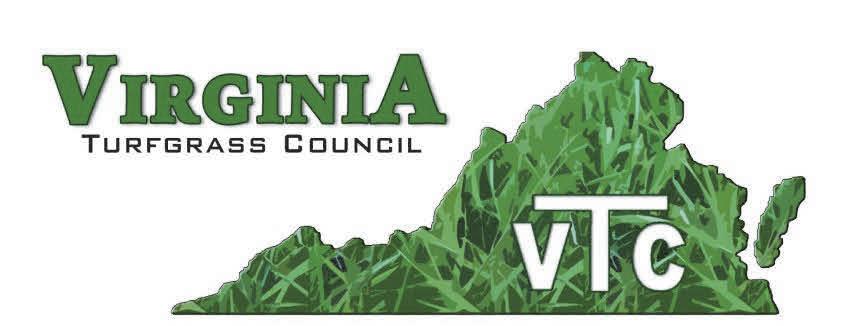
12:45 Weeds in the Landscape (Jeff Derr, VT) 3:00 Insects in the Landscape (Alejandro Del Pozo, VT) 4:00 End
Wednesday, December 07
8:00 AM – 5:00 PM
8:00 Legislative Issues Across the Nation (Bob Mann, NALP)
9:00 Tree Botany and Maintenance (Joel Koci, VSU)
11:00 Tree Installation and Maintenance (Joel Koci, VSU) 12:00 Lunch (Provided) 12:45 Natives in the Landscape; DCR’s Nutrient Management Program (Anita Tuttle, DCR)
2:00 Keep it Legal: Rules for Fertilizer, Pesticides, etc. (Gonzalo Ortiz, DCR)
3:00 Transition Zone Challenges (Stephanie Romelczyk, VCE) 4:00 Landscaping Mistakes and Challenges (Stephanie Romelczyk, VCE) 5:00 End
Thursday, December 08
8:00 AM – 4:00 PM
8:00 Working with Environmental Groups 9:00 Natives in the Landscape
10:00 Botany 101 (Guy Mussey, VCE)
12:00 Lunch (Provided)
12:45 Botany 101, Continued (Guy Mussey, VCE) 2:45 Pruning, Planting, and Mulching (Guy Mussey, VCE) 4:00 End

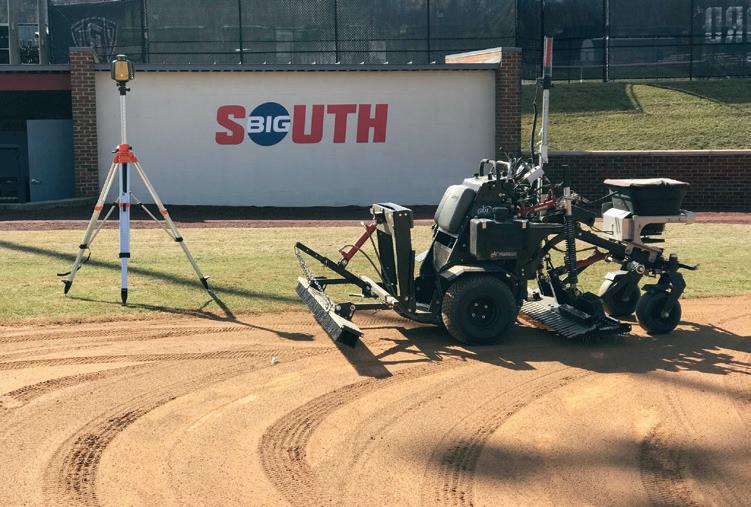








Once again, Come to the Bay integrates a vital environmental service project into the schedule. Two years ago, our first service project worked with the City of Virginia Beach to provide and plant 6,000 dune saving American Beachgrass plants at the oceanfront. Last year we partnered with the City, Tidewater Community College, and multiple environmental groups to provide and plant 15,000 of the same plants at a Chesapeake Bay inlet.
For 2023, the service project has once again increased and will make a very significant impact on Pleasure House Point, a restored tidal point in the Cty of Virginia Beach. We will work on three areas: restoring a bioswale, adding native plants to a display garden, and planting erosion protecting American Beachgrass plants along the Lynnhaven River.
Our work will conclude with lunch and a presentation by public school students.
This day will focus on ways your company can increase profit margins with native plants and by controlling invasives. The morning’s focus on natives answers many critical questions, including:
•What is a native plant?
•When are natives not the best solution?
•What is the role of lawns?
•Why should I form partnerships with environmental groups? and
•Where do I buy natives plants?
Invasives are highlighted after lunch. Climate change and unwelcome movement of plants increasingly brings these unwelcome visitors to the forefront of Virginia’s landscapes.
Before the social, city leaders will discuss ways to remain legal when planting on public property and Virginia Natural Gas will highlight their efforts at restoring native habitats.

8:00 Pesticide Recertification Categories 3A, 3B, 5A, 6, 8,10, and 60 Categories 3A, 3B, and 60 are finished by 2:00 (others will be finished by 5:00)
Special: Persons attending the Pesticide Recertification program may stay longer and receive fertilizer recertification credit.
Landscape / Lawn Short Course Two Days: Wednesday and Thursday

The Landscape / Lawn Short Course is designed to meet the needs of all green industry professionals. Intensive training will allow you to make better decisions in daily management that will improve both the quality of your landscape and your profit.

•Keep it Legal – Pesticide and Fertilizer Regulations
•Selecting, Planting, and Maintaining Trees
•Identifying and Controlling Weeds
•Identifying and Controlling Insects
•Horticulture Basics •Turfgrass Basics •Soil Basics •The ABC’s of Pruning •Planting Dos and Don’ts
Monday
Monday Service Project NC

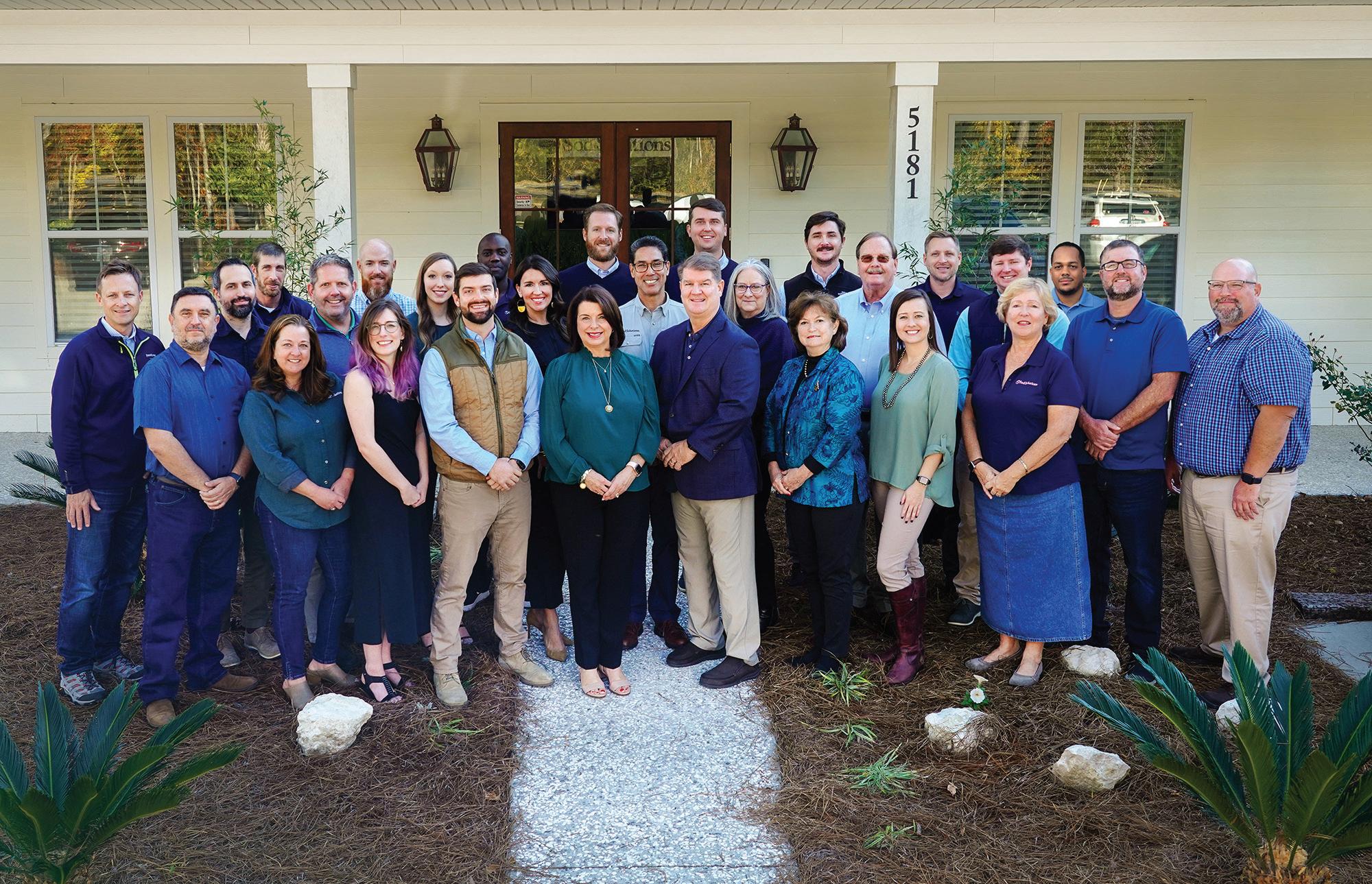

What are the goals of the Plant NOVA Natives Committee and what do you do as Chair?
Plant NOVA Natives is a social marketing partnership made up of about 150 local organizations in Northern Virginia that are all working together to get out the word about native plants and their value in saving our local ecosystem. We’ve been going for almost a decade now, trying to reach people in as many ways as possible—social media to a certain extent, but also by reaching people where they are in person. We also do this by attending events and conferences, including conferences for landscape professionals. My role in that is to come up with and organize ways of doing outreach.
Most landscape professionals in Virginia have heard a little bit about the push to move toward more native plants. Can you tell me why that is so important?

What people need to know is that insects can only eat the plants with which they evolved, for the most part, and birds can only feed their babies insects, for the most part. So if you don’t have native plants to feed the insects, you won’t have insects to feed the birds, and in general the ecosystem falls apart. Those are just two examples of why native plants are key to the future of our local ecosystem.
Unfortunately, when we build houses in Northern Virginia and elsewhere, of course we tear out the native plants to put down houses and driveways and roads. What we leave behind in between is just construction dirt. Then we throw down some turf grass and put in some plants, but mostly what developers have
been using are non-native plants. That includes the turfgrass. So you could have a landscape that started out as woods that fed the whole ecosystem, the birds and everyone else, and end up with a landscape that feeds nobody.
What we’re trying to do is encourage people to start substitut ing or adding native plants to their landscaping so that there’s something for the birds to eat. It turns out that in order to actu ally support the ecosystem, your property or your neighborhood needs to have at least 70% or so biomass consisting of native plants. A lot of that is going to be trees, so native trees are par ticularly important to this process.
We’re helping to get this word out because our population of birds and other wildlife has been steadily declining over the last 50 years in Northern Virginia, and the world in general. We want to help out on a local basis because sometimes people think of nature and wildlife as something “way out there,” maybe in the mountains or in the Chesapeake Bay. But this is part of the world too. These birds are as important as any other birds. We can ac tually do something about it on our own properties, and we are trying to urge people to do that.
You can imagine that this work is unlikely to happen in a city to a great extent, it’s only pockets here and there. It’s also unlikely to happen on a farm where they’ve clear-cut everything and are spraying insecticides everywhere. So what that really leaves is the places in the exurban and suburban environment where we do have control over our property. There, we have no reason why we need to spray insecticides or any particular reason why we have to have one plant over another. It’s going to make a difference if we all work together on this.

Is this initiative a bigger challenge for landscape professionals or for homeowners?
Mostly with the homeowners because they mostly just haven’t thought of this. In Northern Virginia, where there are 2.4 million people, probably most people have not heard of this. I run into people who are very much into environmentalism who haven’t heard of this. The movement is growing in a big way, and more and more people are recognizing it. Governments are also really getting into this because of the reasons I’ve mentioned. However, we still have a long way to go to reach all the homeowners and other property owners, homeowners associations, even faith communities that have large lawns where they could use some trees. We still have our work to do in that regard.
What I think of when I visit, for example, a local homeowners association is that when they did the construction of the town homes, they had a whole lot of dirt that they had to move, so they piled it into hills. Then to meet the necessary requirements to control erosion and sediment runoff, they scattered grass seed on those hills, then they sold the houses. The homeowners came along and they saw these grass-covered hills and they just figured, “Well, that’s normal.” It never occurred to them to do anything else about it afterwards. As a result, from then on the poor landscape workers have been mowing on these steep hillsides, grass that’s not being used at all. That doesn’t seem very safe to me, but at the very least it must be difficult. That’s the kind of place that’s ideal for potential reforesting. Just plant some trees in there, then gradually let the leaves stay there afterwards, and then slowly it’ll reforest by itself. You just need to control the
invasive plants, which is another subject, and then you won’t have to mow that anymore. But you’re still going to need to hire your landscape company to take care of that area too.
We want to help anyone who’s interested in figuring out how to make that part of their business model. That they would be maintaining that area so that it looks nice while controlling the invasive plants.
What is the problem with invasive plants?

We had this initial problem that we cut down the forest and put in a house, turfgrass,shrubs, and maybe a tree or two. That created a sterile environment, so a that’s big problem, but an even worse problem is that some of those shrubs and trees and plants turned out to be invasive, meaning that because they’re no longer in their native environment, they don’t have the control mechanisms that the ecosystems normally would provide. They escape very frequently because the birds eat their seeds or ber ries then carry them elsewhere, including into our few remaining natural areas where they start to grow and eventually displace the native plants that are there.
In Northern Virginia, just as an example, I spent time regular ly on wildlife surveys in some natural areas and those surveys in clude documenting all the plants that are in bloom on a given day. When you look at the data produced, approximately a quarter of the plant species that we’re documenting are not from this conti nent. That includes the majority of what we call weeds in our gar dens. Sometimes people think about native plants as being weeds.
Tiger swallowtails on Joe Pye weed. Photo by Margaret Fisher“Sometimes people think of nature and wildlife as something ‘way out there,’ maybe in the mountains or in the Chesapeake Bay. But this is part of the world too. These birds are as important as any other birds. We can actually do something about it on our own properties, and we are trying to urge people to do that.”
One such plant is butterfly weed, which turns out to be one of the best landscaping plants for a formal looking landscape. It’s a beautiful orange color, it’s very well-behaved and it stays in a nice small size and yet it’s called butterfly weeds. But if you look at the weeds themselves, the things that you’re pulling out certainly more than half are non-native. They’re coming from Europe and Asia for the most part.
How does your work align with the VTC and the EI and how have you envisioned working together to promote your causes?
It aligns in a lot of ways. First of all, we appreciate all the work that VTC-EI members and supporters are doing. We know that
they have already been trying to do a lot of work to help the envi ronment and they have a way of reaching the very folks that we’re trying to reach. This makes a very good alignment. We met at an NVNLA meeting a year or so ago. When Tom Tracy was intro duced, I immediately knew I wanted to go talk to him. I think he pretty much immediately knew he wanted to talk to me because we can definitely work together. I don’t see any inevitable conflict in our missions, which are to make it worth everyone’s while to do landscaping in an environmentally friendly way and try and make it profitable for people.
For example, we at Plant NOVA Natives started a regional tree campaign last year called “plant NOVA trees,” our goal be ing to increase the tree canopy in northern Virginia. It seemed more and more likely that though planting trees is wonderful, the goal of increasing canopy will never be met if we’re cutting them down or losing them for other reasons faster than we’re planting them. There are many reasons why that happens. One reason, not statistically the biggest reason, is that sometimes trees are planted and managed improperly, so working with each other and trying to help the landscape folks know how to do that properly is a very good thing.

Looking around along the roadsides and in our common ar eas, what we’re seeing is that one of the biggest threats to trees is that there are non-native vines, like Japanese honeysuckle, that are killing the trees at an enormous rate. We did some extrapolation of data from Tacoma Park, Maryland that gave us a figure, potentially, of three million trees at risk from invasive vines in Northern Virginia. That is way more than the planting goal of 600,000 tiny trees. That data may or may not turn out to be exactly right, but we know from the work we’ve done so far in surveying the trees in Northern Virginia that at the very least, hundreds and hundreds and hundreds of thousands of trees are at risk from invasive vines. The way you save those trees is to cut the vine at the base of the tree and paint the stump with herbi cide. You have to be a certified pesticide applicator to do that if it’s not on your own property, so this is an enormous opportunity for the landscape industry.
In the past there’s been a little tension between the turfgrass community and some environmental groups. It’s great to see some mutual goals and cooperation. What do you anticipate for the future?
I’m sure we’ll have some misunderstandings along the way and people who are overenthusiastic and who haven’t thought this through, but hopefully we can be patient with each other and help each other figure these things out. It’s going to take a while, and again, the landscape industry is critical to this. Without their help, we’re not going to get anywhere.
In Northern Virginia it seems that most of the planting decisions are made by professionals. For the most part, whatever landscaping plants came with the house is what ends of getting sold with the house. Most people don’t seem to garden at all, so all those proper ties out there are still going to need to be taken care of. A little bit of shift in the skill set of the workers could be quite useful. What we’ve found is that those companies that provide competent care
“Those companies that provide competent care and maintenance of landscapes that include native plants, whether they’re more naturalized landscapes or formal landscapes that include native plants, they’re in huge demand.”
and maintenance of landscapes that include native plants, whether they’re more naturalized landscapes or formal landscapes that include native plants, they’re in huge demand. There’s not anywhere near enough of them, so people are always complaining that they can’t get anyone to do the work. You need to be able to distinguish what is, in fact, a weed from the native plant that just hasn’t bloomed yet. It may take a new skill set, which is that companies will have to do gradually, but they’re still going to be in demand, people still want to pay them. They don’t want to do it themselves.

Homeowners can start with small steps we recommend. Just adding a few native plants, that’s really easy. If someone isn’t sure how to do this or what would do the most good, what I suggest to people is they take their big empty lawn and plant a tree in the middle of it. That tree, when it grows up, is going to provide more value to both the ecosystem and the tempera ture of your property and the aesthet ics of your property than anything else. But it has to be properly planted and not run over by the lawn mower. It’s a very simple problem, but we hear it all the time. The healthiest way of transplanting a tree is to trans plant when it’s really young, so it may be only two feet tall and look like a stick, and it’s easy to nick it with your lawnmower or your string trimmer. It’s just a matter of getting people to really care about not doing that.
What is one thing that you want landscape professionals in Virginia to take away from this?


The main takeaway that I would like to share is that we all appreciate the birds and value the wildlife that’s around us. We all want to help it, but most of us don’t know how. That includes everybody, not just the turf grass industry, so let’s work together and make it happen.

For over a century, the Hampton Roads Agricultural Re search and Extension Center has served those interested in growing.
Farmers from across and sometimes beyond the region travel to the 70-acre property on what’s now Diamond Springs Road in Virginia Beach to drop off seeds and plants for free testing.
Local Master Gardeners help maintain public gardens on the grounds. Faculty and staff at the facility research topics including invasive pests and fruit production.

But the center may have to relocate, and some worry about what that would mean for the community.
The state gave Virginia Tech half a million dollars this year to study what it would take to decamp from their current location and set up elsewhere in the city.
Developers have long eyed the spot, one of the few remaining large parcels in the urban corridor with development potential.
It’s along the border with Norfolk and near major transporta tion hubs such as the Norfolk International Airport, Interstate 64 and Chesapeake Bay Bridge-Tunnel.
According to the most recent city property assessment, the part of the land owned by Virginia Beach – 58 acres of the total 70 – is worth about $5.1 million.
“This is very valuable property,” said Jeff Derr, a weed sciences professor and director of the Hampton Roads center. “There’s always been developers and others interested that would love to develop the site.”
What did come as a surprise to the center was the state-man dated moving study.
Virginia Beach Del. Barry Knight introduced it as a budget amendment allocating $500,000 “to begin planning the reloca tion” of the extension center.
Virginia Tech has until mid-December to produce the study, for which it’s hired an outside consultant.
The Hampton Roads extension center started as a vegetable co-op in the early 20th century when vegetables were a more common crop on the Southside, Derr said.
It became part of the Virginia Tech network of 11 extension centers throughout the state in the 1980s.
In 1920, the co-op had ceded the land to the state to serve as a research station focused on improving local crop production. They then leased it for 99 years, which ended a few years ago.
Around then, city officials met with Virginia Tech and center leaders about moving to rural southern Virginia Beach. It was rumored a major company wanted the spot on Diamond Springs for a warehouse.
City spokespeople did not respond to WHRO’s multiple re quests for comment for this story.
Ultimately, the extension center renewed its 99-year lease.
That settled the issue until this year’s budget amendment, which Knight said followed economic development discussions over the years with city staff.
Derr said center staff and faculty have enjoyed the location because of the easy access but also the land itself.
“This is prime farmland,” he said. “Our soils here drain well. … It’s a good soil type for growing crops for doing the types of research that we do here.”
That allows researchers to set up experiments on which turf grass variety fares best under certain conditions, for example, or how nurseries can control weeds.

There are also a host of old buildings and greenhouses on the site.
The Virginia Turfgrass Council, an industry association, does a lot of work with the extension center, said executive director Tom Tracy. He said he and others around the region want it to stay put.
That includes a nursery owner on the Eastern Shore who told Tracy they value being able to drive just over the bridge-tunnel, drop off a diseased plant and have answers about it within days to save their field.
“What would happen if somebody says, you know, ‘the Nor folk Botanical Gardens — we can develop that land, it’s much more valuable,’” Tracy said.
“I think to the industry and to the Master Gardeners, it’s at that level. And I think that people don’t understand what a gem, what a treasure we have.”
Tracy added he thinks the current location is also important for researching greenery and water management in the urban setting. It’s surrounded by businesses and homes.
Del. Knight said he has not directly heard any concerns over a potential move, and that the feasibility study is simply to research the option. He thinks it could be smart to move the agricultural center to an agriculture-heavy part of the city like Pungo.
“Nothing’s been decided,” he said. “I don’t understand why anyone would object to looking at a study to see if you could locate it on land that’s worth a lot, lot less.”
 By Jay McCurdy Ph.D., Associate Professor, Turfgrass Extension Specialist • Department of Plant & Soil Sciences • Mississippi State University This is the first article of a multi-part series detailing the origins and future of turfgrass.
By Jay McCurdy Ph.D., Associate Professor, Turfgrass Extension Specialist • Department of Plant & Soil Sciences • Mississippi State University This is the first article of a multi-part series detailing the origins and future of turfgrass.
Turf consists of a layer of various plants cultivated to form a uniform ground cover, typically one that can tolerate foot traffic and routine mowing. The first known use of the word turf occurs before the 12th century and refers to the “upper stratum of soil bound by grass” (Merriam-Webster, 2022). Objectively, turf only exists in human-maintained systems; however, the species com prising various turf scenarios long predate human interference.
Those turfgrass species most frequently selected for turf sce narios have been subject to environmental pressures (notably, frequent grazing) that have selected for traits that enhance their value as turfgrasses. Valuable traits include color, texture, uni formity, growth habit, and durability under stress. Plant breed ing, the introduction of non-native and exotic species, and recur rent selection for desirable traits have led to modern cultivars and varieties of turfgrass that predominate in maintained turf settings such as lawns, sports fields, golf courses, sod farms, and roadside rights-of-way.
Turfgrasses are typically narrow-leaved species of relatively short stature that are somewhat regularly mown at heights of approximately four inches or less (Thompson and Kao-Kniffin, 2017). By convention, all grasses, including turfgrasses, belong to the Poaceae family of monocotyledonous flowering plants. The monocotyledonous (monocot) clade includes grasses and grasslike flowering plants with seeds that contain only one embryonic leaf (also known as a “cotyledon”). Monocots offer few obvious advantages for turf applications, as other flowering plants in the dicotyledonous clade (having two embryonic leaves) also persist under typical mowing heights as weeds or amenity forbs within various turf scenarios.



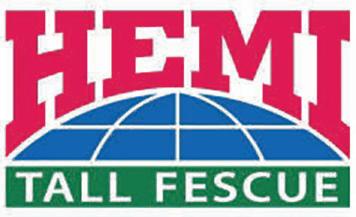

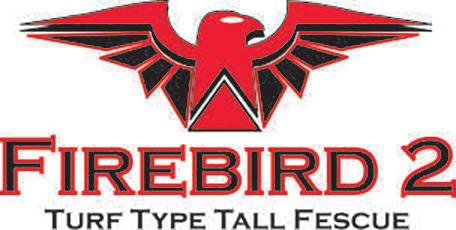
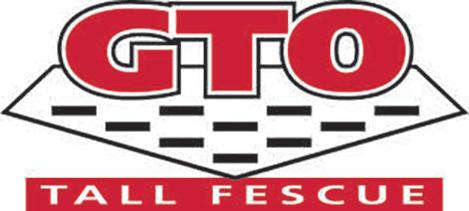






Turfgrasses are broadly classified as cool- or warm-season plants. Cool-season species are the predominant turfgrass species in climates with cold winters and mild summers, as well as adequate soil moisture. Warm-season species predominate in climates with mild winters and hot summers. The overlapping area between the two is termed the transition zone, where cool- and warmseason species grow equally successfully.
Cool-season species have evolved a C3 photosynthetic pathway for carbon fixation. They use an enzyme (called RuBisCO) to fix CO2. That carbon from CO2 forms a three-carbon sugar and then goes on to fuel plant growth and metabolism. Alternatively, warm-season species have evolved a C4 photosynthetic pathway that produces a four-carbon sugar. Plants with the C4 pathway
have improved metabolism and a competitive advantage over C3 plants under conditions of drought, high temperatures, and limited nitrogen or CO2
Cool- and warm-season species have different optimal tem peratures for growth and metabolism. Warm-season species grow best when temperatures are above approximately 80°F and enter dormancy below their “base growth temperature” of around 50°F. Alternatively, cool-season species grow best when temperatures range from 60–75°F. Cool-season species enter a state of winter dormancy at temperatures below freezing and are often considered dormant during summer conditions that exceed their ideal growing temperatures, especially when soil moisture is limited. Growth models to predict the suitability and phenol ogy of these species are largely based upon these parameters and estimates.
Figure 3. Lawngrass zones of the United States (Freeze, 2022).


There are approximately 40 million acres of turfgrass in the United States (2% of the total U.S. land cover) (Milesi et al. 2005). Several estimates suggest that residential lawns represent roughly 75% of U.S. cultivated turf (an area of approximately 30 million acres) (Roberts and Roberts, 1987; Vinlove and Torla, 1994).
A lawn is an area of soil-covered land planted with grasses or forbs that are maintained at a short height by mowing or graz ing. Lawns may be situated in residential areas or commercial or shared public spaces. The word lawn originates from an ancient Celtic language, possibly Welsh. The Welsh word llan (pro nounced ɬan, where ɬ has a slight sh sound), which is often used in compound words to describe a local place named for a saint, such as Llanbedr or St. Peter, has come to mean a cleared or enclosed area of land—perhaps around a church, business, or settlement. The common Brittonic word llan or laun came to mean an enclo sure, most likely around a place of worship. Early lawns would have been used for communal gatherings and possibly grazing, although the area would have been distinct from agricultural fields. Lawns would have been composed of mixed grasses and forbs that were endemic to the area.
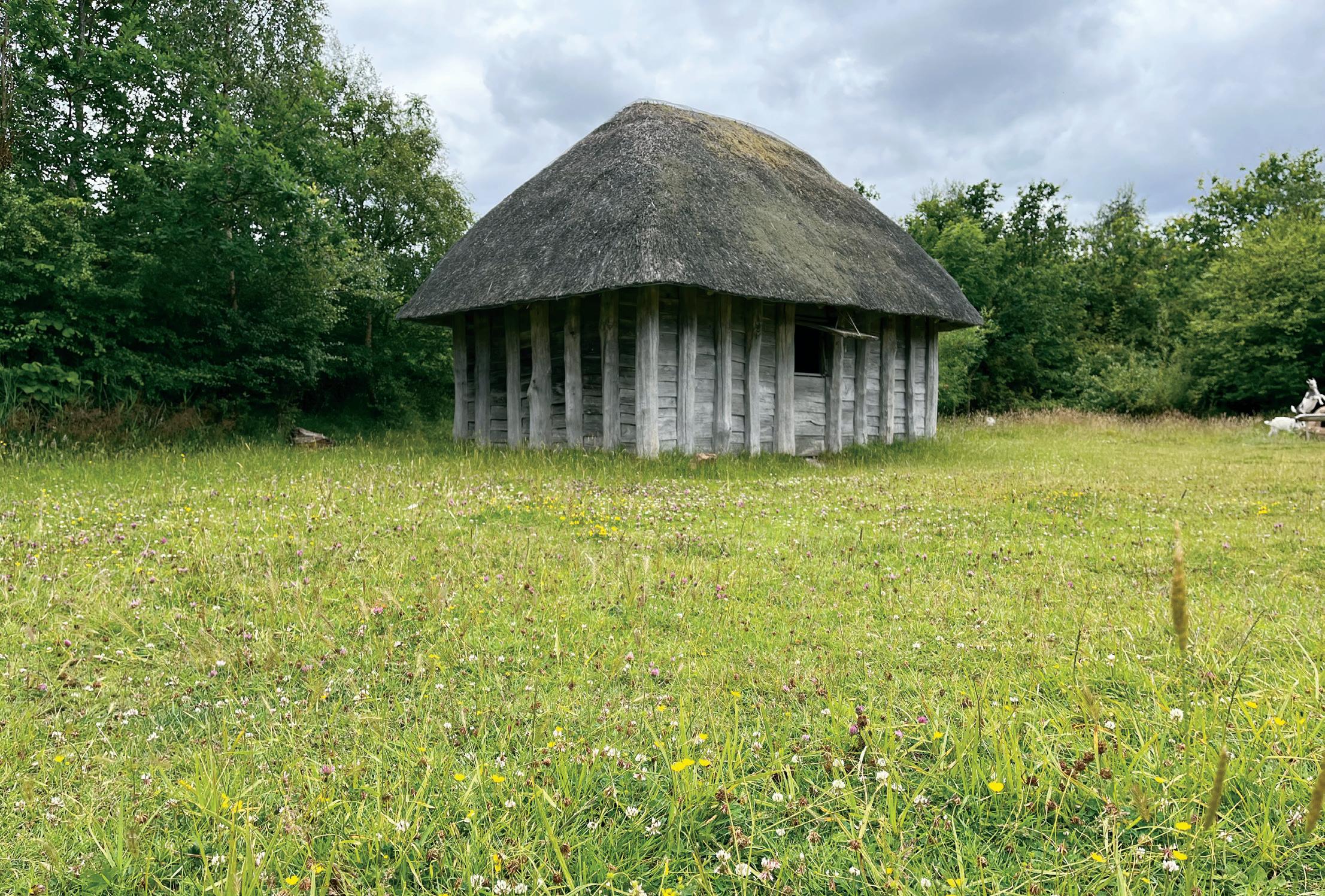
Lawns are frequently attributed to European origins, but their purposes (e.g., communal gatherings, periodic grazing, aesthet ics, etc.) and the ingredients to manage them (low-growing spe cies and a suitable environment) have often coincided through out global human history. For at least many thousands of years, humans have felled trees, grazed, and gardened their immediate surroundings. This behavior partly arose from the advent of agriculture, but also serves for defense—modern gardeners can easily relate to the struggle to keep deer or rabbits from ravag ing gardens. An aesthetic preference for stately grounds certainly would have developed, but could only occur when safety, time, and labor were available. Grazing would have prevented cleared land from reverting to forest, and other, previously intangible benefits of a cultivated lawn would have been noticed.
Though they may not fit neatly within the contemporary definition of a lawn, early examples of maintained open spaces as “yards” or “lawns” are fairly commonplace the world over. They include examples like the plaza between mounds at the Cahokia complex in Illinois, where the stick-and-ball sport chunkey was played 900 years ago, and Japanese gardens that incorporat ed manicured grasses, mosses, and even trimmed bamboo. While not unique to Europe, most scholars agree that the modern American lawn aesthetic owes much to European origins.





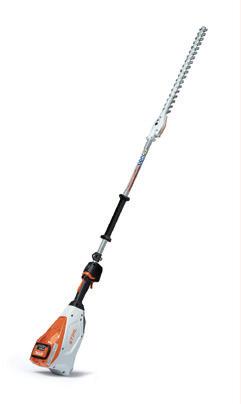
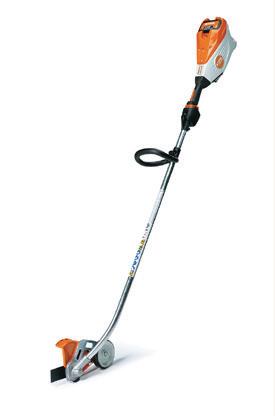



Lawns existed in Europe from the Middle Ages (in the 5th through the 15th century) onward. They were rudimentary by contemporary standards, with very practical purposes—lineof-sight for defense and communication, ease of movement, production of grain crops and vegetables, grazing, and fire pre vention. Those early lawns must also have created vistas and an aesthetic that evolved with European civilization.
The European lawn of the 17th and 18th centuries was a dem onstration of wealth and power at some of the continent’s finest estates. The palace of Versailles’s tapis vert or green carpet—one of Europe’s first and finest garden lawns—was expanded by André Le Nôtre to two acres in the 1660s. A century later, the lawn had been cemented as an exemplar of Western Europe’s idealized built landscape. The architect Capability Brown refined the English lawn with natural or “romantic” estate settings for wealthy clientele. His landscapes featured smooth, undulating lawns running from “house to horizon,” sometimes with dammed rivers or creeks, serpentine lakes, clumps of vegetation and scat terings of trees, and a visible horizon line. These gardens often used grazed grass lawns or pastures to supplement the percep tion of scale within the landscape. In some instances, they used
lines and texture to deceive the eye—employing concepts like false horizons using “ha-ha walls” or cleared land that sloped uphill and decreased in width as it reached a ridge.
During the late 18th century, wealthy families of the Americas began maintaining lawns. In 1780, a Shaker community near Philadelphia began commercializing lawn seed. Thomas Jefferson is credited with the first English-style garden in the United States, circa 1806.

Before the advent of mechanical mowers, manicured turfgrass required animal grazing or human-powered scythes. The term “mower” dates to the 14th century, referring to one who cuts grass with a scythe. The term may have multiple origins—Old English mawan and the Greek term amao both mean “to reap a crop.” In 1830, Edward Beard Budding based his mowing machine on a cloth-cutting cylinder used to trim the irregular nap of wool cloth. Thus, modern mowing equipment was born.

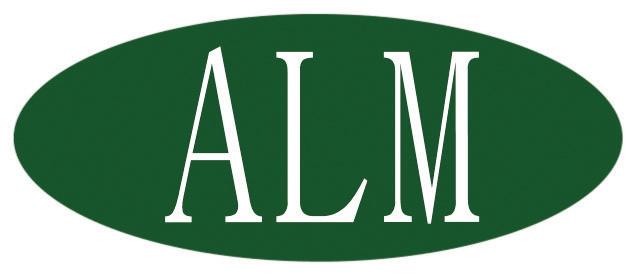

The Victorian era’s penchant for sport spurred revolutionary new mower designs to maintain sporting venues for golf, football, lawn bowls, lawn tennis, and cricket. In fact, the term “lawn-tennis” was coined in the 1880s.



Mowing is the most common practice performed on maintained turfgrass and is by most accounts the most important and defining maintenance operation. The obvi ous purpose of mowing is to reduce the height of the turf, but it also serves other purposes, including the control of undesirable vegetation (i.e., weeds) and the production of a desirable sports surface (e.g., a “true” putting surface or a target surface firmness).

The ability to mow large areas without tending livestock or toil ing over a scythe revolutionized the grounds maintenance industry and sparked a revolution in landscape design. Modern lawns look far dif ferent from their early predeces sors. Lawns have been a mainstay of the U.S. built environment since the mid-20th century, during which large tracts of land were converted into suburban housing, recreational areas, and commercial real estate. This trend, spurred by population growth, technological advance ments, and other socioeconomic fac tors, led to a reliance on turfgrass as a ground cover for newly construct ed outdoor spaces.

This is to say almost nothing of the parallel and synergistic develop ments of the golf industry, which we will explore in a future article. It also says little about the histori cal changes in schools of thought regarding urban infrastructure and the development of parks and neigh borhoods that were spurred by suc cessive waves of soldiers returning from overseas wars, the effects of the Spanish flu pandemic and city dwellers’ migration to the suburbs, or Depression-era spending on pub lic projects that transformed the U.S. landscape and natural spaces in ways that are evident to this day.

In a future article, we will explore the concepts of landscape sustainability and “future-proofing” for the modern turfgrass economy. In much of the U.S. and around the world, rooftops, parking lots, busy city streets, and home lawns are replacing nat ural habitats. These systems have, for better and worse, changed how we interact with, build, and perceive our environment. Turf is just one result of these changes.
Merriam-Webster. (n.d.). Turf. In Merriam-Webster.com dictionary. Retrieved June 27, 2022, from https://www.merriam-webster.com/dictionary/turf





Milesi, C., Running, S.W., Elvidge, C.D., Dietz, J.B., Tuttle, B.T., & Nemani, R.R. (2005). Mapping and modeling the biogeochemical cycling of turf grasses in the United States. Environmental Management. 36(3), 426-38.
Roberts, E.C., and Roberts, B.C. (1987). Lawn and Sports Turf Benefits. Pleasant Hill, TN: The Lawn Institute. 31.
Thompson, G. L., & Kao-Kniffin, J. (2017). Applying biodiversity and ecosystem function theory to turfgrass management. Crop Science, 57(S1), S-238.
Vinlove, F. K., & Torla, R. F. (1994). Comparative estimations of US home lawn area. Journal of Turfgrass Management, 1(1), 83-97.
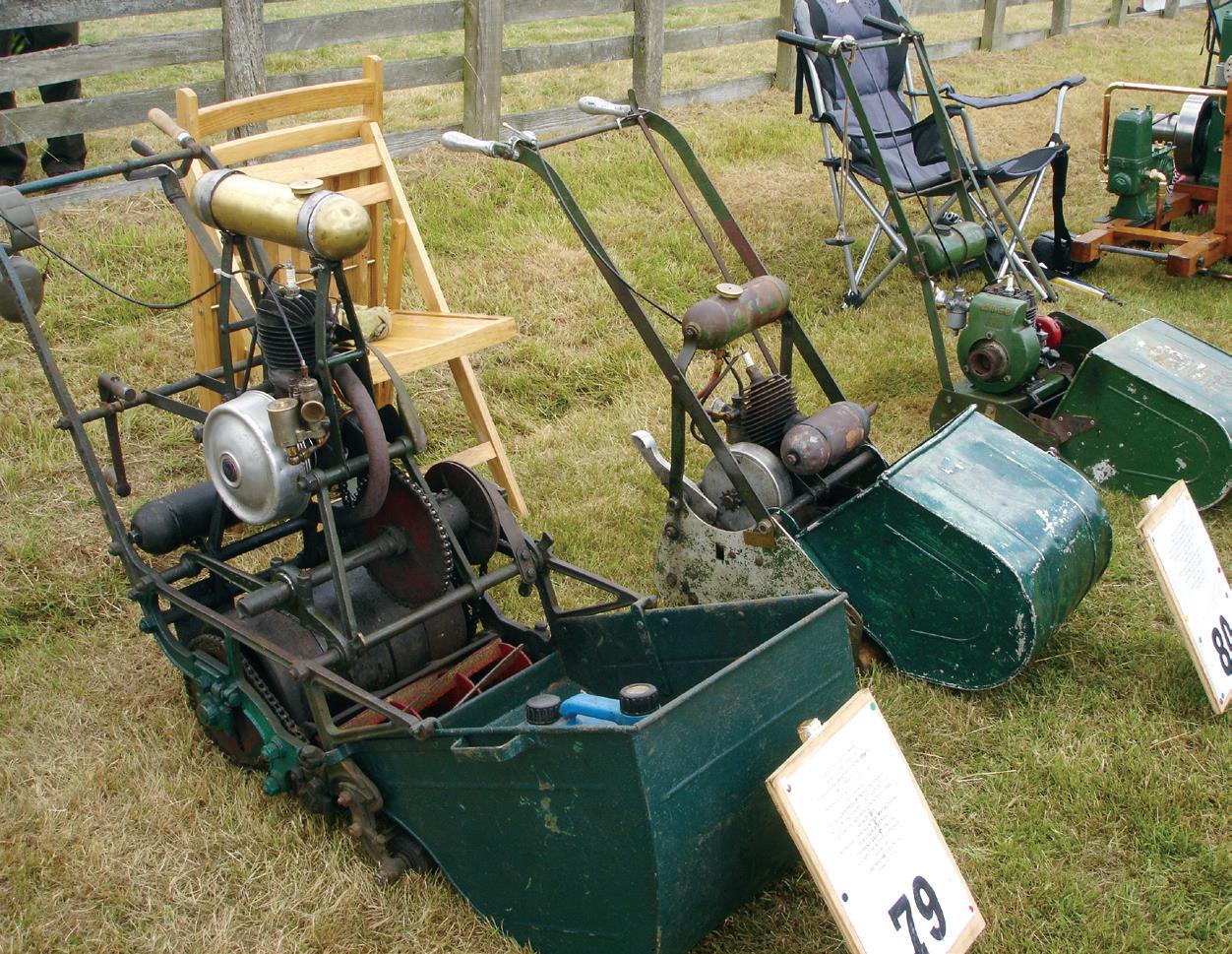

rganizations fail to thrive when their people don’t have the skills and knowledge to perform at the highest lev el. As turfgrass professionals, we understand that the right environment allows plants to grow to their full potential. But what does a growth environment look like for an employee? Could it be that our team would have more success if the culture was more conducive to employee development?
Only about half of all employees globally strongly agree that they have had opportunities to learn and grow in the past year according to Gallup. Yet the ones who do work harder and more efficiently, return 9% higher customer loyalty and 10% higher profit than undeveloped employees. What’s more, employees
That means it should be relevant to their role at the company with tangible outcomes in their current and future responsibili ties. But it also means that leaders must consider the motivations, strengths, and blind spots of each worker. Nothing is more ex hausting than training that feels remedial, so letting each person help select their developmental plan will create the greatest buyin from everyone. These conversations should be collaborative and encouraging.
Second, development must be intentional. The reason that most people never grow is because their progress is never dis cussed or encouraged. When time isn’t set aside purposefully, development simply doesn’t happen. A stagnant organization is one that has not expressly prioritized employee growth. Part of intentional developmental opportunities is having goal set ting and accountability. Just like in horticulture where we would never plant a tree and then expect it to grow without frequent check-ins to adjust for changing conditions, each employee needs to be encouraged and checked-in with weekly.
Finally, employee growth must be ongoing from onboarding through promotion. Growth and development are a long and
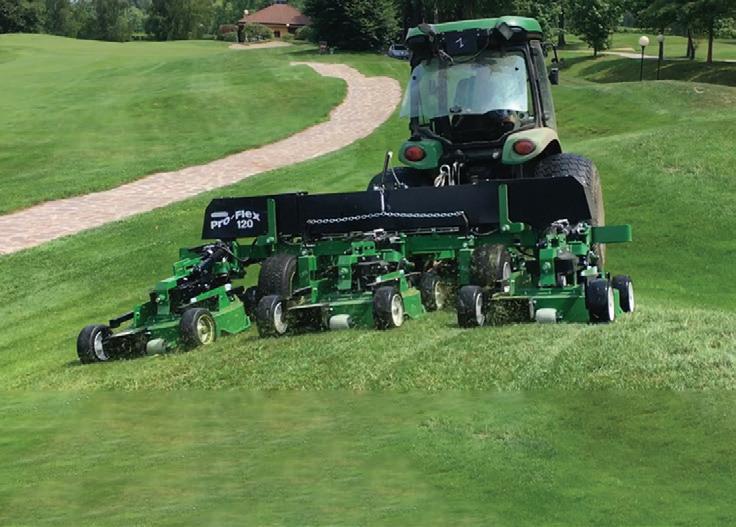

slow process where consistency breeds the best outcome. Teams which maintain intentional time for growth even during busy seasons are the ones which find the greatest return. Those who only invest in themselves when convenient are often frustrated by a lack of results. When employees stop being developed, they tend to look elsewhere for work. In fact, 93% of the time that employees changed their role, they left their organization to do so. It’s clear that growth will lead to retention if it’s continuous. No matter how you choose to develop your team, you’ll never regret the investment if you commit to consistent, intentional, and individualized development.



MANEUVER IN TIGHT SPACES with a compact design that fits through a standard 36” gate. NAVIGATE WITH EASE with intuitive controls that function a lot like a mower, saving time. GET A SMOOTH RIDE with the floating operator platform that isolates vibrations. KEEP CONTROL EASY with a foot pedal to raise and lower tines. VARY PLUG LENGTH ON THE FLY by finely tuning the hydraulic system. It applies up to 1,200 lbs of down pressure on


